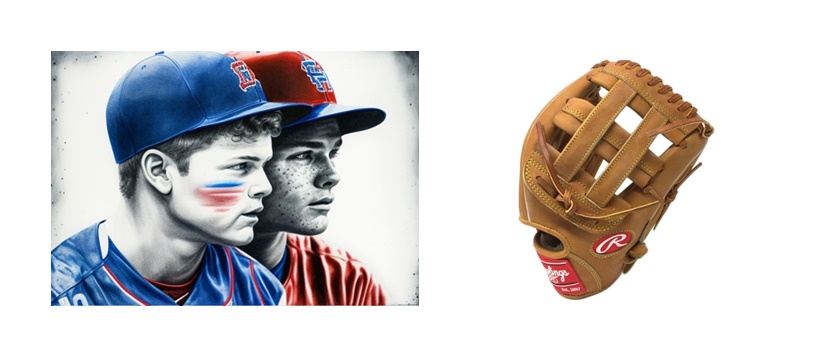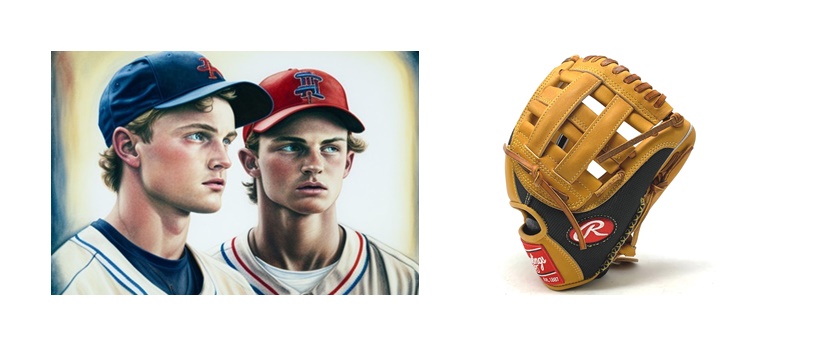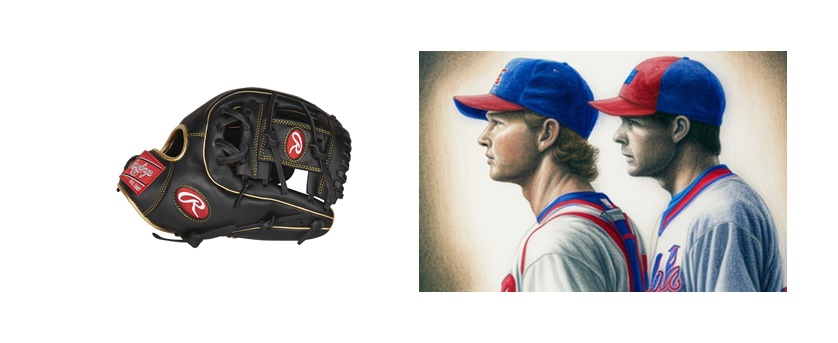Answers to Frequently Asked Questions about Baseball Gloves
Jan 18th 2023
What are the key factors to consider when purchasing a baseball glove?
Position: Different positions on the field require different styles of gloves. For example, infielders typically use smaller gloves with smaller pockets, while outfielders often use bigger gloves with larger pockets.
Size: It is important to select a glove that is the correct size for your hand. A good fit will allow for better control and comfort while playing. Youth gloves have smaller hand opening, tighter finger stalls, and more snug fit than adult gloves.
Material: Baseball gloves can be made from a variety of materials. The grade of leather makes the most noticeable difference. Higher end leather gloves are generally more durable and can be broken in to fit your hand, but they can be more expensive.
Brand: Some brands of baseball gloves have a reputation for quality, innovation, and durability, while others may not be as well-regarded. It is worth researching different brands and reading reviews before making a purchase.
Price: Baseball gloves can vary widely in price, depending on the materials, brand, and other factors. It is important to find a glove that is within your budget depending on how often you play, but also provides the features and quality you need for your game.

What materials are used in the construction of high-quality baseball gloves?
Leather: The most common material used in baseball gloves is leather It is durable, comfortable, and provides a good grip. Leather gloves can be made from different types of leather, such as cowhide and steerhide or different tanneries and countries. Cowhide and steerhide is the most common and is considered a good balance of durability and affordability. Pigskin is used in discount gloves. Kip leather is used on high end gloves.
Synthetic: Another option is synthetic materials. They are usually more durable and make the glove lighter weight. These materials are easy to clean, lightweight, and require less maintenance than leather. However, it may not provide the same feel and grip as leather, so they are typically used on the back of the glove, not on the palm or pocket of the glove.

What are the differences between a youth baseball glove and an adult baseball glove?
The differences between a youth baseball glove and an adult baseball glove include size, weight, and construction.
Size: Youth baseball gloves are typically smaller in size than adult gloves. They are designed to fit the smaller hands of young players and may be easier for them to control.
Weight: Youth baseball gloves are generally lighter in weight than adult gloves. This can make them easier for young players to handle and maneuver on the field.
Construction: Youth baseball gloves are often made with simpler and less durable construction than adult gloves. They may have fewer features and less padding than adult gloves, which can make them less expensive but less durable.
Additionally, Youth gloves may have not as deep pockets than adult gloves, which can make it harder for kids to catch and control the ball. Some adults with small hands can use a youth glove, and some kids are ready for adult gloves sooner than others. It is typical around age 12 is when kids start using adult gloves.

What are some of the top-rated baseball glove brands?
Rawlings: Known for crafting high-quality gloves for players of all levels and positions.
Marucci: This brand offers gloves with a sleek design and innovative features with colorways that are popular among players at all levels.
Nokona: A trusted brand for over a century, Nokona offers a range of high-end USA made gloves for different positions.
JL Glove Company: Small and custom baseball glove manufacturer that may not have the same level of brand recognition as some of the larger, more established companies like Rawlings, Wilson, and Nokona. They offer high-quality gloves that are made with great care and attention to detail.
All-Star : Offers a variety of gloves that are designed with advanced technology to enhance performance and comfort for catchers.

How do I properly break in a new baseball glove?
To break in a glove, the recommended method is to play catch or use a pitching machine to catch balls. A glove mallet can also be used to pound the pocket or create break point closures. Pre-oiling the glove is not typically necessary for most modern gloves because they come pre-oiled. Oil or conditioner is used middle or end of season to keep leather clean and from drying out.

How do I measure for the correct size baseball glove?
Measuring for the correct size baseball glove involves measuring the distance from the tip of your middle finger to the base of your palm. This measurement will give you the length of the glove you need. Here is a step-by-step guide to measure your hand for a baseball glove:
1. Use a flexible measuring tape or a piece of string to measure the distance from the tip of your middle finger to the base of your palm.
2. Note that while measuring, you should make sure that your hand is relaxed and open.
3. It is also a good idea to try on different gloves to find the one that feels most comfortable and provides the best fit.
4. Keep in mind that most baseball gloves will require a break-in period, so a glove that feels tight at first may become more comfortable with use.
5. It is important to make sure you have the right size for your hand, as a glove that is too large or too small can make it difficult to control and may cause discomfort while playing.
What is the difference between infield and outfield baseball gloves?
Infield baseball gloves and outfield baseball gloves are both used in the game of baseball, but they are designed for different positions on the field. Infield gloves are sometimes flatter pocket design, which allows players to quickly and easily grip and throw the ball. Outfield gloves, on the other hand, are generally larger and have a deeper bigger pocket, which helps players catch and control the ball more effectively when it's hit at a greater distance. In summary, infield gloves are designed to help players throw the ball quickly and easily, while outfield gloves are designed to help players catch and control the ball when it's hit at a greater distance.
How do I maintain and care for my baseball glove?
Here are some tips on how to maintain and care for your baseball glove:
1. Break in your glove: Before using your glove in a game, it's important to break it in first. You can do this by playing catch with it, using a mallet to soften it.
2. Keep it clean: After each use, wipe down your glove with a damp cloth to remove dirt. Avoid using harsh chemicals or detergents, as these can damage the leather. Don't put anything on your glove you wouldn't put on your own hand.
3. Condition the leather: Use a leather conditioner at end or middle of season to keep the leather supple and prevent it from drying out. Apply the conditioner evenley, and be sure to get into all the crevices, seams, and laces.
4. Store it properly: When you're not using your glove, store it in a cool, dry place. Avoid storing it in direct sunlight, damp area, hot car trunk, as this can cause the leather to crack or fade color.
5. Repair any damage: Check your laces. Tight and conditioned laces have a less chance of breaking. By following these steps, you can help ensure that your baseball glove stays in good condition for years to come.
How long should a baseball glove last before needing to be replaced?
The lifespan of a baseball glove can vary depending on factors such as the quality of the materials used, the frequency of use, and the level of maintenance provided. A high-quality leather baseball glove that is well-maintained and used regularly can last for several seasons, while a lower-quality glove or one that is not well-maintained will probably lose its shape and structure. Proper care and maintenance of a baseball glove, such as regular conditioning and cleaning, can help to prolong the life of the glove. Additionally, it is important to note that gloves that are used frequently are more likely to wear out faster than those that are used less frequently. It is a good idea to inspect your glove regularly, and if you notice any signs of wear and tear, it may be time to replace it.


